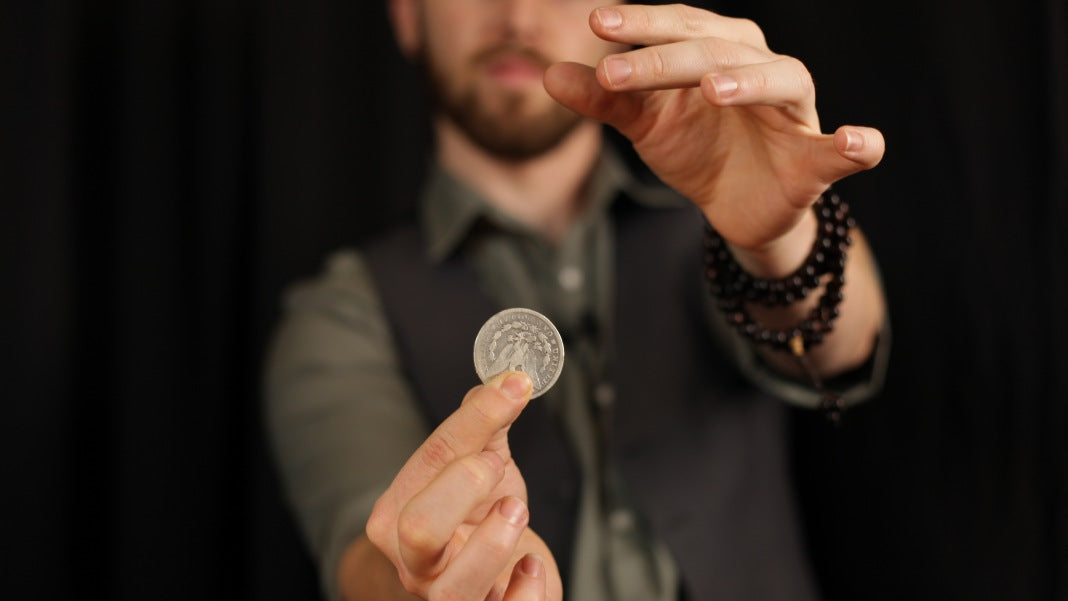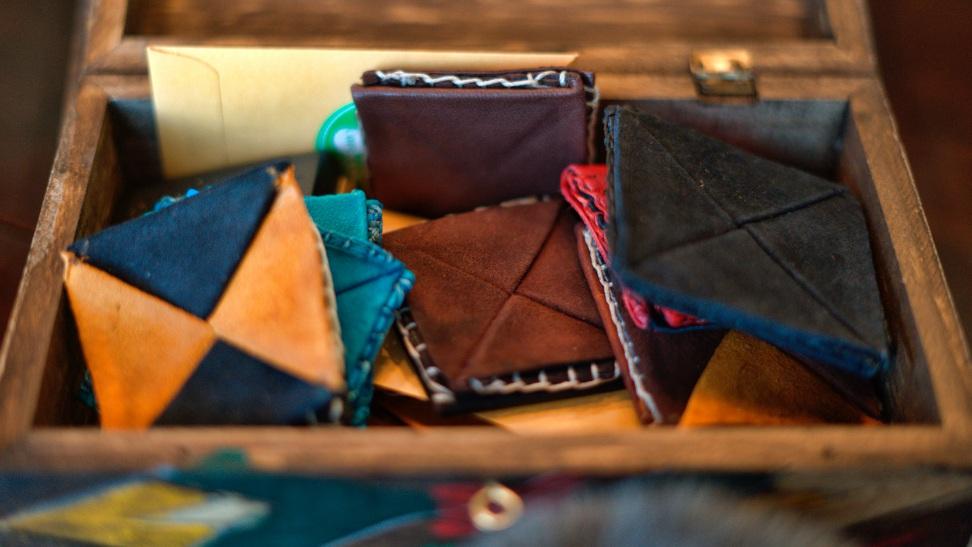Kingdom History

~ Guest Post by Dr. Joaquin M. Ayala de Cedoz, PhD ~
Paratge. Cortezia. Convientiae. These are the Occidental words you are greeted with on the obverse of the Kingdom Coins. What do they mean, exactly? Well, that is difficult to say because historically speaking, none of them have a uniquely individual/singular, definition – rather, they represent a set of ideals, a philosophy of sorts, even a way of life. The terms individually could be defined or translated in a literal sense, but that would generally diminish their overall meaning. I interpret them as a collective whole, and to me, they represent honor, loyalty, respect, perseverance, moral purity, brother/sisterhood and even mystery.
Geographically speaking, Occitan was once more widely used than French, and it was the first language of many people – including some English royalty! It was not until the Albigensian Crusade (a.k.a. the Cathar Wars) in 1208, declared by Pope Innocent III, that suppression of the people and their language began. Over hundreds of years, this suppression ranged from Occitan being discouraged to being outright forbidden, and those who used it were punished with varying degrees of severity.
The suppression was a result of these wars, the annexation of lands to the French government, the French Revolution and especially, the thirst of the government to develop a national identity through the use of one pure language – French. All dialects and patois were considered shameful and lesser “languages” which must be banned. The language persevered and has survived to this day, but not without the consequence of losing large numbers of users. Today it is enjoying a renaissance, even gaining official language status in southern France in schools, government establishments and public areas.
With all this rich history and culture behind them, the Kingdom coins lend themselves to some very interesting presentations. While they are not representative of any real monetary value, it does not mean that they cannot be made to represent money, or something similar. It could be a coin that was traded to represent a favor owed to the giver, based on the philosophy of paratge, cortezia & convientiae.
Before I even had the Kingdom coins in hand, I had already developed a great idea for them. As a fluent speaker (not native) of Occitan, using my personal interpretation of the words, I applied them as a substitute for Chinese coins for Troy Hooser’s Charming Chinese Challenge. If you are interested in using them for that effect and are familiar with it, you will have to find a thin satin cord to use – the ribbon used for the Hooser effect is too wide. The crosses in the dollar-size Kingdom coins are better, and the ones in the half dollar-sized coins may be prohibitive.
Rather than giving away my exact scripting, I will give you a general idea that you can use to develop your own along those lines. Note that since the words paratge, cortezia and convientiae are up for interpretation, you can use that to your advantage – or just make something up!
If you are not familiar with the Hooser effect, you can purchase an updated version in two sizes, U.S. dollar or U.S. half dollar, from your favorite dealer. As an aside, though the ad copy uses the word “gimmicks”, there is no such thing used in the Charming Chinese Challenge.
Those of you that are familiar know that the coins are threaded onto a length of ribbon and then penetrated off the ribbon, one at a time, in very visual and eye-popping ways. In my presentation of the effect with the Kingdom coins, they represent three relics from Rennes-le-Château (Rènnas del Castèl in Occitan). In a concept similar to the [three] Deathly Hallows in Harry Potter, each coin represents a different part of a (whole) philosophy (the aforementioned paratge, cortezia & convientiae). Separately, they are not very meaningful, but together, they provide insight for living a fruitful life.
If the place name of Rennes-le-Château is familiar to you, you may have read the Dan Brown book, The DaVinci Code. The old mystery/conspiracy theory of Rennes-le-Château – the supposed treasure that was dug up by Bérenger Saunière, is a large part of the plot in the book. There is much more to that mystery than that particular point, and that sort of thing makes it easy for the Kingdom Coins to represent just about anything to do with Languedoc and Occidental history!
Dr. Joaquin M. Ayala de Cédoz (Dr. J.) is originally from Barcelona, Spain and is currently based in the United States. He is a studious magic historian and loves to share the history of magic with audiences through the performance of classical magic. Dr. J. holds a PhD in Culinary and Nutritional Anthropology and lives in Michigan with his wife and two children. For more of his thoughts, visit his blog: www.magiadeespana.wordpress.com











I was recently scammed out of $53,000 by a fraudulent Bitcoin investment scheme, which added significant stress to my already difficult health issues, as I was also facing cancer surgery expenses. Desperate to recover my funds, I spent hours researching and consulting other victims, which led me to discover the excellent reputation of Capital Crypto Recover, I came across a Google post It was only after spending many hours researching and asking other victims for advice that I discovered Capital Crypto Recovery’s stellar reputation. I decided to contact them because of their successful recovery record and encouraging client testimonials. I had no idea that this would be the pivotal moment in my fight against cryptocurrency theft. Thanks to their expert team, I was able to recover my lost cryptocurrency back. The process was intricate, but Capital Crypto Recovery’s commitment to utilizing the latest technology ensured a successful outcome. I highly recommend their services to anyone who has fallen victim to cryptocurrency fraud. For assistance contact Recoverycapital@fastservice.com and on Telegram OR Call Number +1 (336)390-6684 via email: Capitalcryptorecover@zohomail.com you can visit his website: https://recovercapital.wixsite.com/capital-crypto-rec-1
PROFESSIONAL CRYPTO RECOVERY EXPERT→THE HACK ANGELS
I want to use this Medium to say big thanks to THE HACK ANGELS RECOVERY EXPERT for helping me recover my stolen crypto worth $960,000 through their hacking skills. I tried it. I was skeptical but it worked and I got my money back. I lost access to my digital wallet and lost all my crypto assets. I was devastated and felt like the world was pulling down on me. I had no idea of how to get back access to my crypto assets and gave up trying to get it back. I was scrolling through the internet and saw a post about a Crypto recovery company that goes by the name THE HACK ANGELS RECOVERY EXPERT. I didn’t hesitate to contact them and provided them with all the information. Throughout the process, communication was essential, and frequent updates gave much-needed transparency and assurance. They have a track record of successful cryptocurrency recovery, the firm has assisted several clients in recovering their lost or stolen digital assets. I highly recommend their services if you ever need a professional and reliable crypto recovery team.
You can contact them through their hotline at (support@thehackangels.com) They also have a great website at (www.thehackangels.com)
WhatsApp +1(520)200-2320)
I promised to give back a review on their wonderful job well done
PROFESSIONAL CRYPTO RECOVERY EXPERT→THE HACK ANGELS
I want to use this Medium to say big thanks to THE HACK ANGELS RECOVERY EXPERT for helping me recover my stolen crypto worth $960,000 through their hacking skills. I tried it. I was skeptical but it worked and I got my money back. I lost access to my digital wallet and lost all my crypto assets. I was devastated and felt like the world was pulling down on me. I had no idea of how to get back access to my crypto assets and gave up trying to get it back. I was scrolling through the internet and saw a post about a Crypto recovery company that goes by the name THE HACK ANGELS RECOVERY EXPERT. I didn’t hesitate to contact them and provided them with all the information. Throughout the process, communication was essential, and frequent updates gave much-needed transparency and assurance. They have a track record of successful cryptocurrency recovery, the firm has assisted several clients in recovering their lost or stolen digital assets. I highly recommend their services if you ever need a professional and reliable crypto recovery team.
You can contact them through their hotline at (support@thehackangels.com) They also have a great website at (www.thehackangels.com)
WhatsApp +1(520)200-2320)
I promised to give back a review on their wonderful job well done
FRESH FULLZ USA UK CANADA GERMNAY ITALY SPAIN
REAL DL SCAN FRONT BACK WITH SELFIE
What’s App = +1.. 727.. 788… 6129…
Tele Gr@m = @ killhacks OR @ leadsupplier
Skype = @ peeterhacks
E mail = hacksp007 at g mail dot com
SSN DOB DL ADDRESS PHONE EMAIL FULLZ
NIN DOB ADDRESS SORT CODE & ACCOUNT NUBER FULLZ
SIN DOB ADDRESS MMN PHONE EMAIL
DL FRONT BACK WITH SELFIE & SSN
CANADA UK RU FR IT DE DL FRONT BACK
BUSINESS EIN COMPANY FULLZ
YOUNG & OLD AGE FULLZ
HIGH CREDIT SCORES FULLZ PROS
FULLZ WITH MVR
TAX RETURN FILLING & KYC STUFF FULLZ
PAYDAY LEADS & LOAN LEADS
SWEEPSTAKES & COMBOS
BULK FULLZ AVAILABLE
PASSPORT PHOTOS WITH SELFIE
W-2 FORM WITH DL FRONT BACK
#usafullz #ssndobdl #ukfullz #ninfullz #canadafullz #sinfullz
#cccvvshop #dumpscvv #fullzusauk #fullzdlssn #einfullz
#sellssnfullz #w2formusa #highcspros
Many other stuff available fresh sp@mmed
Guaranteed & verified fullz
Replacement will also be provided for invalid or bad fullz
Available all day 24/7
I was recently scammed out of $53,000 by a fraudulent Bitcoin investment scheme, which added significant stress to my already difficult health issues, as I was also facing cancer surgery expenses. Desperate to recover my funds, I spent hours researching and consulting other victims, which led me to discover the excellent reputation of Capital Crypto Recover, I came across a Google post It was only after spending many hours researching and asking other victims for advice that I discovered Capital Crypto Recovery’s stellar reputation. I decided to contact them because of their successful recovery record and encouraging client testimonials. I had no idea that this would be the pivotal moment in my fight against cryptocurrency theft. Thanks to their expert team, I was able to recover my lost cryptocurrency back. The process was intricate, but Capital Crypto Recovery’s commitment to utilizing the latest technology ensured a successful outcome. I highly recommend their services to anyone who has fallen victim to cryptocurrency fraud. For assistance, contact Recovercapital@cyberservices.com Capital Crypto Recover on Telegram OR Call Number +1 (336)390-6684 via email: Capitalcryptorecover@zohomail.com
Leave a comment